Cyclops – First Generation Of Giants Who Were Prisoners Of Tartarus
A. Sutherland - AncientPages.com - The Cyclops are probably best known for their massive, cyclopean masonry and blacksmithing.
Who were these mythical giants?
A first century CE head of a Cyclops, part of the sculptures adorning the Roman Colosseum. Image credit; Steven Lek - CC BY-SA 4.0
This first race of Cyclops – Brontes (thunderer), Sterops (lightener), and Arges (thunderbolt) - were the first generation of Greek giants. They were monstrous children of Gaia, Mother Earth, and Uranus (Ouranos) means 'sky.'
Each of them, as well as their future descendants, such as Polyphemus, we know from the Odyssey, had only a single blazing eye located directly in the middle of the forehead. This eye is said to represent 'the fiery sun.' Each one lived alone with his family on a mountaintop. Their father, Uranus, considered them so shockingly hideous that he threw the Cyclops into Tartarus, the lower region of the Underworld.
Was it only their ugly appearance, which forced the mighty Uranus to get rid of them, or was he simply afraid of their enormous power?
In any case, Uranus believed that he would never see them again. Freed and again placed in the dungeons of Tartarus, the Cyclops had to stay imprisoned for a very long time.
Mother Gaia and her children knew they must cooperate to fight their father. It was apparent that Uranus hated his offspring and hid them in Gaea's body.
She appealed to the sons for vengeance; Cronus (a Titan) alone responded. He took a sickle and removed his cruel father Uranus' testicles as he approached Gaia. As Uranus lay dying, he cursed his son, saying:
"Cronus, it will come to pass that one of your children will do to you what you have just done to me." Then, with a final shudder, a look of anger and betrayal in his eyes, Uranus died
Cyclops: Image credit: Odilon Redon (1840–1916) - collection: Kröller-Müller Museum - Public Domain
Source: https://artsandculture.google.com/asset/the-cyclops-odilon-redon-1840-1916/mAFMK3NTXaN_RQ?hl=en
A sky and weather god, Zeus, raced to Tartarus to release the imprisoned giants. The Cyclops were free because they worked for Zeus, forging thunderbolts.
Cannibals, Craftsmen And Accomplished Builders
Although they were frightening to look at, these young gods were powerful and brilliant craftsmen and accomplished builders. However, different authors described them in their way.
As we know, most mythologies always present several alternative versions of their stories and figures. In Homer's performance, the Cyclops were lawless cannibals dealing with a pastoral life; later authors made them rude, strong, and stubborn giants, but also the craftsmen of Hephaestus and skilled builders.
The famous Cyclopean walls are supposed to be their incredible legacy. Greeks of the Classical Age believed that only the Cyclops, mythical giants, could have been skilled and strong enough to build such gigantic walls. Other structures, such as the massive fortifications of Argos, Tiryns, and Mycenae, were also attributed to the Cyclops.
Pausanius, (c. AD 110 – c. 180, who lived and worked during the reigns of Roman emperors Hadrian, Pius, and Marcus Aurelius, wrote that:
"Nothing is left of the ruins [of Tiryns] except the wall, built by Cyclops with natural rocks, all so huge that a pair of mules would not even begin to shift the smallest. In ancient times, little stones were fitted to bind the rocks together."
As accomplished blacksmiths, the Cyclops contributed remarkable magical weapons for the gods. At first, they created a formidable thunderbolt for Zeus, the most powerful god of the Olympian pantheon.
With this weapon in the form of a handgun launching a death ray, Zeus was able to win the war against the Titans.
Among the Cyclops' other achievements in weaponry were: Hade's Helmet of Darkness, which made its wearer invisible; Poseidon's Trident, which would later become the emblem for the future god of the sea; and Artemis' magical bow and arrows.
Written by – A. Sutherland AncientPages.com Staff Writer
Updated on May 25, 2023
Copyright © AncientPages.com All rights reserved. This material may not be published, broadcast, rewritten or redistributed in whole or part without the express written permission of AncientPages.com
More From Ancient Pages
-
 Unexplained Phenomena Witnessed Around Mysterious Ancient Stone Structures In New York – Can A Sacred Native American Mountain Offer Clues?
Featured Stories | Nov 3, 2024
Unexplained Phenomena Witnessed Around Mysterious Ancient Stone Structures In New York – Can A Sacred Native American Mountain Offer Clues?
Featured Stories | Nov 3, 2024 -
 Giant Egyptian Pyramids Hidden Beneath The Sand Dismissed By Egyptologists Without Investigation!
Archaeology | Jun 29, 2020
Giant Egyptian Pyramids Hidden Beneath The Sand Dismissed By Egyptologists Without Investigation!
Archaeology | Jun 29, 2020 -
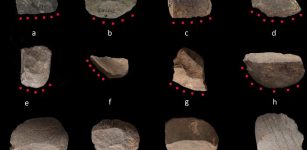 Earliest Evidence Of Rice Harvesting Provided By China’s Ancient Stone Tools
Archaeology | Dec 8, 2022
Earliest Evidence Of Rice Harvesting Provided By China’s Ancient Stone Tools
Archaeology | Dec 8, 2022 -
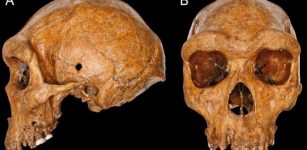 Skull From Broken Hill, Zambia Is Relatively Young – New Analysis Shows
Fossils | Apr 2, 2020
Skull From Broken Hill, Zambia Is Relatively Young – New Analysis Shows
Fossils | Apr 2, 2020 -
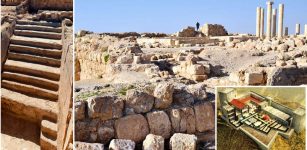 Ritual Bath In Herod’s Fortress Found In Ruins Of Machaerus, East Of Jordan River
Archaeology | Jun 16, 2017
Ritual Bath In Herod’s Fortress Found In Ruins Of Machaerus, East Of Jordan River
Archaeology | Jun 16, 2017 -
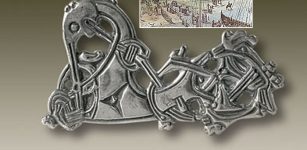 Kaupang – Flourishing Viking Town – A Commercial Hub And Transit Port For North Sea Trade
Featured Stories | Feb 2, 2023
Kaupang – Flourishing Viking Town – A Commercial Hub And Transit Port For North Sea Trade
Featured Stories | Feb 2, 2023 -
 Home Of The Gods – The Return Of The Gods – Part 3
Civilizations | Jun 14, 2018
Home Of The Gods – The Return Of The Gods – Part 3
Civilizations | Jun 14, 2018 -
 Rock Stars: How A Group Of Scientists In South Africa Rescued A Rare 500 Kg Chunk Of Human History
Featured Stories | Oct 20, 2022
Rock Stars: How A Group Of Scientists In South Africa Rescued A Rare 500 Kg Chunk Of Human History
Featured Stories | Oct 20, 2022 -
 Gryla: Cannibalistic, Evil Troll And Her Sons ‘Yule Lads’ – In Icelandic Folklore
Christmas Traditions | Dec 23, 2024
Gryla: Cannibalistic, Evil Troll And Her Sons ‘Yule Lads’ – In Icelandic Folklore
Christmas Traditions | Dec 23, 2024 -
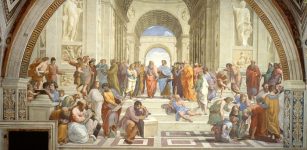 How Did The Renaissance Change Europe?
Ancient History Facts | Oct 10, 2019
How Did The Renaissance Change Europe?
Ancient History Facts | Oct 10, 2019 -
 Australia’s Submerged Indigenous Sites – New Discoveries And Study
Archaeology | Aug 31, 2021
Australia’s Submerged Indigenous Sites – New Discoveries And Study
Archaeology | Aug 31, 2021 -
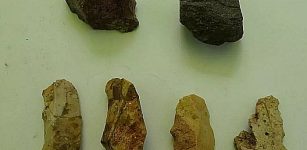 İnkaya Cave Study Brings To Light 86,000-Year-Old Traces Of Human Life
Archaeology | Aug 22, 2023
İnkaya Cave Study Brings To Light 86,000-Year-Old Traces Of Human Life
Archaeology | Aug 22, 2023 -
 Mysterious Camerano Underground City – Secret Meeting Place For Knights Templar?
Featured Stories | Dec 13, 2017
Mysterious Camerano Underground City – Secret Meeting Place For Knights Templar?
Featured Stories | Dec 13, 2017 -
 Cats In The Middle Ages: What Medieval Manuscripts Teach Us About Our Ancestors’ Pets
Featured Stories | Dec 24, 2022
Cats In The Middle Ages: What Medieval Manuscripts Teach Us About Our Ancestors’ Pets
Featured Stories | Dec 24, 2022 -
 Europe’s Largest Predatory Dinosaur Unearthed On The Isle Of Wight
Archaeology | Jun 11, 2022
Europe’s Largest Predatory Dinosaur Unearthed On The Isle Of Wight
Archaeology | Jun 11, 2022 -
 What Are The Most Common Misconceptions About Pirates?
Ancient History Facts | Apr 16, 2024
What Are The Most Common Misconceptions About Pirates?
Ancient History Facts | Apr 16, 2024 -
 Centuries-Old Authorship Mystery – Solved By Stanford Musicologist Jesse Rodin
Archaeology | Jul 18, 2022
Centuries-Old Authorship Mystery – Solved By Stanford Musicologist Jesse Rodin
Archaeology | Jul 18, 2022 -
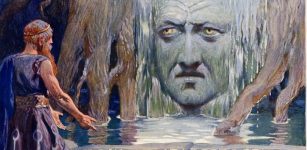 Well Of Urd (Urdarbrunn): Abode Of Fate Goddesses And Powerful Symbol In Norse Beliefs
Featured Stories | Dec 17, 2022
Well Of Urd (Urdarbrunn): Abode Of Fate Goddesses And Powerful Symbol In Norse Beliefs
Featured Stories | Dec 17, 2022 -
 Drought Was Not The Reason Cahokia, North America’s First City Was Suddenly Abandoned – New Study
Archaeology | Jul 4, 2024
Drought Was Not The Reason Cahokia, North America’s First City Was Suddenly Abandoned – New Study
Archaeology | Jul 4, 2024 -
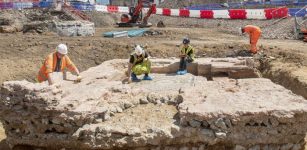 ‘Incredibly Rare’ Roman Tomb Unearthed Near London Bridge Station
Archaeology | Jun 13, 2023
‘Incredibly Rare’ Roman Tomb Unearthed Near London Bridge Station
Archaeology | Jun 13, 2023


